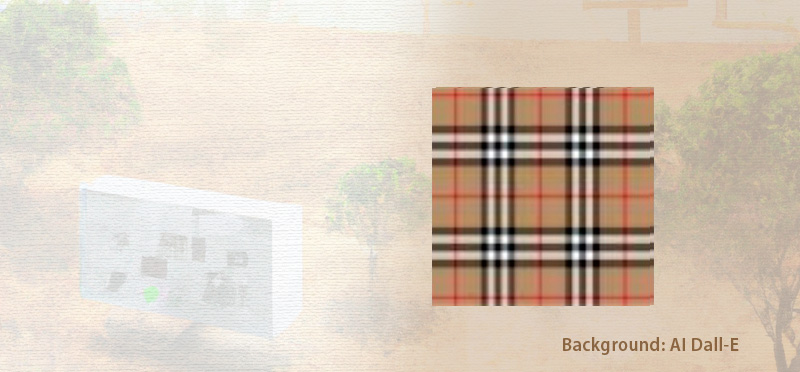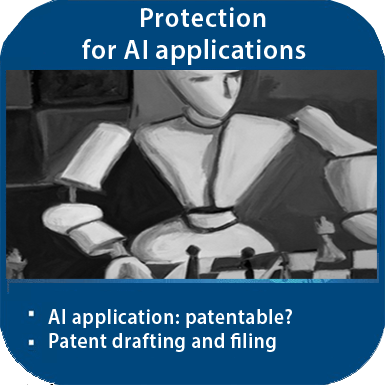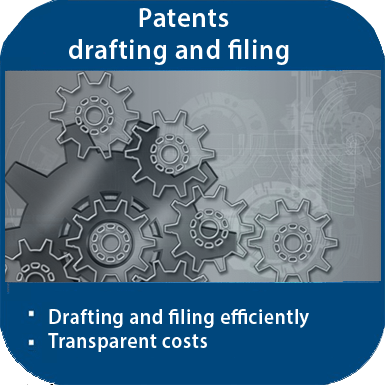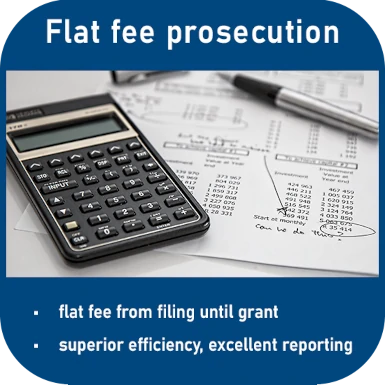EUIPO: Burberry check pattern as virtual trademark

Trademark protection for check patterns has been part of important case law for years, especially in relation to 3D trademarks. The recent Burberry decision of the European Trademark Office (EUIPO) stands out in particular: the Burberry check pattern had been applied for as a virtual trademark.
Check pattern as a virtual trademark? The facts
In Nice Classes 9, 35 and 41, protection was claimed for the Burberry check pattern as, inter alia, non-fungible tokens (NFTs) and other digital tokens, virtual goods (bags, textile goods, clothing, headgear, footwear, eyewear) and audio-visual content.
The EUIPO objected to this trademark application under Article 7(1)(b) EUTMR in August 2022, finding that the trademark applied for was not registrable. Now the decision has been published (08/02/2023, Decision Burberry).
The decisive factor about the Burberry check pattern as a virtual trademark is the assessment whether the check pattern offers the distinctive character to refer to the origin of the goods. And the particularly interesting question was whether the existing case law is also applicable to a virtual mark.
Burberry, Louis Vuitton and V. Fraas: Checked pattern as trademark
The European case law on check patterns as trademarks is well established. A check pattern as a trademark is, in relation to the goods it covers, a design intended to be applied to part or all of the surface of those goods (see also CFI T 359/12 - Louis Vuitton). The decisive element of the contested mark is then that it merges with the appearance of the goods concerned.
Therefore, the criteria for assessing the distinctiveness of three-dimensional marks consisting of the shape of the product itself must be applied to the assessment of a check pattern as a trademark. And for these it applies that they can only be protected as trademarks if the shape of the product deviates significantly from the norm or customary and can therefore fulfil its essential function of identifying origin.
This case law on three-dimensional marks should also be applied to figurative marks, the EUIPO explained in the Burberry Decision, which consist of the shape of the product in question or the shape of a part of the product in question, as such marks are also not independent of the appearance of the product (also Judgment EU:T:2012:442 - V. Fraas).
According to the EUIPO, the Burberry check pattern applied for as a trademark does not meet these requirements of a deviation from the norm. The design represented by the mark was not substantially different from various basic designs which are commonly used in trade for the goods and services in question.
Checked pattern as a virtual trademark
The interesting question was whether the established case law also applies to the virtual mark. The EUIPO confirmed that and explained this decision. The Office pointed out that the established case law in relation to 3D marks also applies when the contested mark is a figurative mark consisting of the two-dimensional representation of that product. Even then, the EUIPO explained, the mark does not consist of a sign that has nothing to do with the goods. The consumer's perceptions of real goods can be transferred to equivalent virtual goods, since an essential aspect of virtual goods is to imitate core concepts of real goods.
This is an interesting decision regarding virtual trademarks and the requirements for a virtual trademark. The Burberry check pattern was rejected as a virtual trademark, the trademark was not registrable, said the EUIPO.
Trademark application: 3D trademark or virtual trademark
Is trademark protection also an issue for you? We would be happy to take on your trademark application, even in the complex area of 3D trademarks or virtual trademarks.
The initial consultation is free of charge. Please contact us without obligation by phone at info@kollner.eu or +49 (0)69 69 59 60-0.







